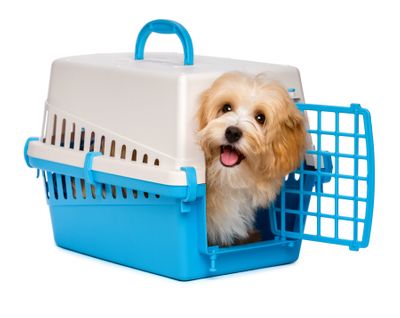How to Move Your Pets
MOVING PETS
When you go new places® every member of your family should be at ease. Cats, dogs and other animals are especially sensitive to moving. The secret to pet relocation is planning. Follow these pointers and ask your Southern Utah Movers Agent if you have questions.
Pet Regulations Checklist:
Check the rules and regulations before moving your pets. Typically when moving, you need to bring certificates with you showing that your pet has had the proper inspections and vaccines. These requirements may differ in your new home, especially when moving to a new state.
- State rules. Each state has their own laws and regulations for pet owners. Find your state’s Veterinary Office or Department of Agriculture here.
- Local ordinances. Check with the City Clerk’s office in your new town to find out about local ordinances. You can learn about any leash laws, licensing rules, limits on the number of pets per household, and zoning laws that may prohibit specific animals in residential areas.
- Label Everything. Mark all boxes with room and a box number. Record these in a box identification log that shows the number of boxes packed per room and the total number of boxes packed. (Your Southern Utah Movers Operator will provide an official inventory during the loading process).
- Apartments & Condos. Many communities do not permit cats and dogs, let alone exotic pets like iguanas, snakes, tarantulas, and ferrets. Make sure that you know the policies for your furry (and scaly) friends and any extra costs they charge for pets.
- Health certificates. Many states require a health certificate for dogs and some require it for cats and other pets as well. Find out your new state’s requirements here.
- Rabies tags. Most states require a rabies tag for cats, dogs, and some exotic animals.
- Permits. You may need to purchase a permit before your exotic pet can enter your new home state. Ask your veterinarian for help with the application process.
Tools to keep your pets safe while moving:
The devices below will help ensure your pets’ safety while moving. They include items that will help you find your pets if they get lost, tools to keep with you while traveling, and papers for helping your pets if they get hurt.
- ID tags. If your pet can wear a collar, put one on and attach an ID tag. (For birds, put the tag on a leg band.) The tag should include the pet’s name, your name, and the destination address and your number.
- Microchips. Pets with microchips are entered into a pet recovery system so if your pet gets loose, you’ll be contacted once it’s found. If your pet was purchased from a breeder, pet store, or shelter it likely already has a microchip.
- Pictures. Keep a photograph of your pet so you can show your new neighbors what your pet looks like if it gets lost.
- Collars. Make sure you have collars on your pets while they’re traveling in the car or on a plane. For animals that get fidgety, you probably want to get a harness they can’t wiggle out of.
- Leashes. Keep a chain and leash for your dog to keep them in your new yard if you have to wait for a fence to be built. Pack a spare in case your pet breaks the leash.
- Pet carriers. If you’re traveling by airplane, any pet in the cabin must be in a pet carrier. In a car, some pets are less stressed in a carrier rather than on the loose. To find out more about pet carriers click here.
- Records. Getting your pet’s health records from your veterinarian will help a new vet provide the best care for your pet.
Take water from your home during your journey. It will help keep your pet calm and prevent them from getting sick.
Pet transportation methods:
Do you hire a pet-moving service, or do it yourself? Many moving companies, are not allowed to move your pets. Buses and trains cannot transport pets unless they are medical service animals. If your pet requires special handling and you cannot move him or her yourself, consider a professional pet service. Ask your Southern Utah Movers Agent for their recommendation.
- Travel by air
- Travel by car
- Find a professional pet shipper
CARRIERS
A portable kennel, or pet carrier, is an essential purchase for pet movers to ensure your pet’s safety and comfort. You can purchase pet carriers at local pet stores and at most airlines as long as you give 48 hours advance notice.
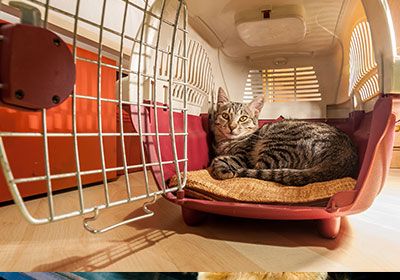
What should you look for in a pet carrier?
- Size. The pet carrier should be just big enough for your dog or cat to stand up, turn around, and lie down.
- Type. Even birds, lizards, and exotic pets need pet carriers. Conventional cages do not meet airline standards for exotic pets.
- Cross-ventilation. Make sure your pet carrier has cross-ventilation and a leak-proof bottom to prevent any messes from spreading. Pets that get really excited or nervous during travel should have absorbent layers added to their pet carrier for accidents.
- Air Travel Standards. For air travel, kennels must meet U.S. Department of Agriculture (USDA) and International Air Transport Association (IATA) standards.
- Door Latch. Make sure the door latch closes securely, but don’t lock it for air travel: federal regulations require your pet to be accessible in an emergency.
A portable kennel, or pet carrier, is an essential purchase for pet movers to ensure your pet’s safety and comfort. You can purchase pet carriers at local pet stores and at most airlines as long as you give 48 hours advance notice.
Keep your pet comfortable in the pet carrier.
The right pet carrier you can reduce the amount of stress felt by you and your pet. If you have more questions about finding the right kennel or pet relocation contact your Southern Utah Movers Agent.
- Before the move. Keep the carrier out with door latch open so your pet can enter and exit it anytime. Place some of your pet’s favorite treats in the carrier so they get used to going inside. Let your pet use the pet carrier as a bed leading up to the move.
- During the move. Place a favorite toy or blanket inside to help your pet feel secure.
- After the move. Don’t force your pet out of the pet carrier; it will make them nervous. Let them relax inside of their kennel while they adjust. Leave the pet carrier out for a couple days until they get back into their normal routine.
No matter where you get your packing materials, follow these pointers.
- Use only strong, corrugated boxes with tops or flaps that fold shut.
- Packing boxes discarded by your local grocery store can save you money, but make sure they are clean.
- If you use old newspapers for packing, be aware the ink may rub off and stain items.
- Southern Utah Movers will inspect items before they go onto the truck to ensure everything has the proper protection for safe transport. Be prepared to repack a box if your Southern Utah Movers Agent doesn’t believe it’s packed safely.
FLYING
A portable kennel, or pet carrier, is an essential purchase for pet movers to ensure your pet’s safety and comfort. You can purchase pet carriers at local pet stores and at most airlines as long as you give 48 hours advance notice.
- You will ask for pet transportation options when you book your flight. Book very early as the number of pets allowed on each flight is limited. Get authorization. Most airlines allow dogs, cats, birds and fish to travel by air. Whether or not your pet can travel with you in the cabin depends on the type of animal, the size of the cabin, the size of your pet, and how many pets are on the flight. You’ll want to verify your pet can fly on the airline if you are traveling with a venomous snake or other exotic animal.
- Buy pet carriers. Airlines require that most pets travel in an approved pet carrier throughout the flight.
- Find containers. For fish, turtles, and other exotic animals that can’t travel in a carrier, make sure you have the proper plastic buckets or Styrofoam-cushioned boxes. For more tips on transporting aquatic animals read How to Move Fish.
- Label the pet carrier. It doesn’t matter if your pet is in a box, bucket, or kennel. Label the container with the pet’s name, note if it bites, and write FRAGILE: LIVE ANIMAL and THIS SIDE UP clearly on the outside of the container.
- Leave early. You may need to bring your pet to freight loading two hours or more before departure. Also, having spare time at the airport gives you time to make sure containers are properly labeled, get the proper documentation together, and spend time with your little buddy before travel.
Turtles also transport easily via overnight mail. Pack it in a Styrofoam-cushioned box with air holes and lined with soft grass or leaves. Use a labeled box big enough for your turtle to extend its legs and head. Dampen a cloth and place it inside the container.
Tips for your pet’s well-being and comfort during air travel.
Airlines may refuse to transport your pet if…Sometimes airlines will be unable to transport your pet. These are some of the circumstances where you will need to drive with your pet or hire a professional pet mover.
- Book a direct flight if you can. Multiple flights and plane changes mean more handling and more stress for your pet.
- Feed your pet a light meal five to six hours before departure. If you’re transporting fish don’t feed them before the move. Their water will stay cleaner. For more tips on moving your fish, read How to Move Fish
- Do not give water for two hours before take-off, except on hot days.
- Exercise your pet on a leash at the airport and give it any needed medications.
- Place your pet in the carrier, secure the latch, and fasten the leash to the outside of the container.
- Pick your pet up from the airport as soon as you can – within 24 hours of arrival if possible. If you do not, your pet may be shipped back to where it came from. Or, the airline may place it in a kennel at your expense.
- it is not in a USDA and IATA-approved container
- transportation requires more than 24 hours between departure and arrival
- the ground temperature is below 45°F or above 85°F at departure or arrival
- it has been sedated, and the carrier bears no note of the drug name, dosage, and how it was given
- you cannot present proper identification and documents
- your pet is unapproved by the airline
TRAVELING
Car travel is the most popular way to move with pets. It provides a feeling of security for your pet and for you. And it is less expensive than air travel. Traveling in a car with your pet can go smoothly and even be fun when you follow these moving tips.
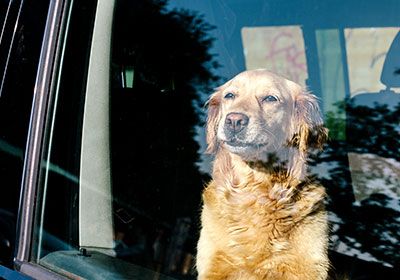
Before you start driving
- Take your pet on short rides before the trip. This will get it used to the motion of the car and prepare you for safer driving with your baby on board.
- If your pet is prone to motion sickness, ask your vet about medications to lessen the symptoms.
- Do not feed or give water to your dog or cat for a few hours before you leave.
- Get an individual dish for food and water for each pet.
- Pack a leash, grooming brush, favorite toy, blanket, and extra towels in the vehicle.
- If you’re staying somewhere overnight, buy a room deodorizer for the hotel.
Once you’re on the road
- Only feed your pet once a day.
- Make frequent stops for water and exercise.
- Keep your pet on a leash for its protection—and yours.
- While riding in the car, do not let your pet hang out the window. Dirt and insects can get in its eyes, causing irritation and infection.
- Keep windows locked to prevent your pet from lowering the window and jumping out.
- Keep your pet in its carrier if it is acting nervous or distracting you while driving.
- Leave the windows cracked between an inch and inch-and-a-half if you don’t have air conditioning in your car. Pets need plenty of fresh air when the weather is hot or when the animal is prone to motion sickness. Gerbils, hamsters, guinea pigs, fish and other small animals are more sensitive than larger animals to hot and cold so check on them regularly and adjust your the heating and air accordingly.
- Do not leave your pet alone in the car! If you must leave the pet in the car lock the doors and check on it every few minutes. If the weather is warm, crack windows for cross-ventilation and provide water. Even on a cloudy day, extreme heat inside a car can be fatal to your pet in as little as 10 minutes. In winter, a car that isn’t running can quickly become like a freezer.
Take a supply of water from home to prevent your pet from getting an upset stomach from unfamiliar water.
- Avoid messy spills by removing dishes of water and food from small cages while the car is moving.
- Keep bird carriers and plastic bags filled with fish covered to help keep them calm.
Tips for staying overnight with your pet
- If you anticipate overnight stops, book pet-friendly lodging in advance.
- Never leave a pet alone in the car overnight.
- If you are traveling with a snake, let it soak for about an hour in the bathtub once you have checked in.
- Try not to leave your pet alone in a hotel room. If you must leave your pet in a room, notify the desk and display the Do Not Disturb sign on the door.
AT HOME
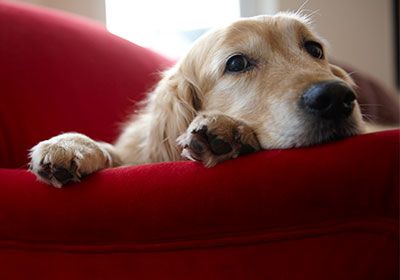
Like people, pets need a little time to get used to new surroundings. A favorite food bowl, bedding and toys will help it feel at home. If your pet will have free roam in your new home, leave the carrier door open so it can come out when it is ready.
To locate a veterinarian, contact your local Humane Society, the American Animal Hospital Association (AAHA), or use our Pet Directory to find veterinarians in your area.
General Reminders
If you normally feed, exercise or play with your pet at certain times, continue to do so. During the final days of packing and preparation, consider keeping your pet at a friend’s home or kennel. This may help keep it from getting upset and running away – or hiding in a moving box, as cats are prone to do. If you have questions at any time during your pet’s relocation, talk to your Southern Utah Movers Account Representative. Your Southern Utah Movers professionals are always ready to help. They want your move to be stress-free—for every member of your family.
Keep your pet’s routine as regular as possible before and during the move. It will help make your pets at home in the new house.
PET AND ANIMAL INFORMATION DIRECTORY BY TYPE
Common House Pets
Dogs
Cats
Birds
Fish
Small Mammals
Rabbits
Ferrets
Gerbils
Hamsters
Hedgehogs
Mice
Reptiles/Amphibians
Turtles
Frogs
Lizards
Snakes
Farm Animals
Chickens
Cows
Goats
Horses
Pigs
Unusual/Specialty
Other
Bats
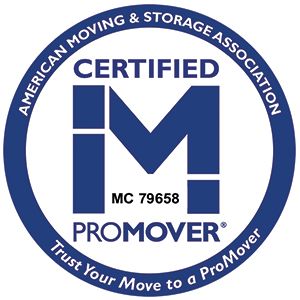
ProMover® Certified
All SU Movers Agents are ProMover Certified, the highest designation from the American Moving & Storage Assocation.

Award Winning Agents
SU Movers adheres to formal, measurable standards for quality. Our Agencies are accountable with regular inspections and evaluations. Customer feedback is also essential for our efforts to improve service on every move.




